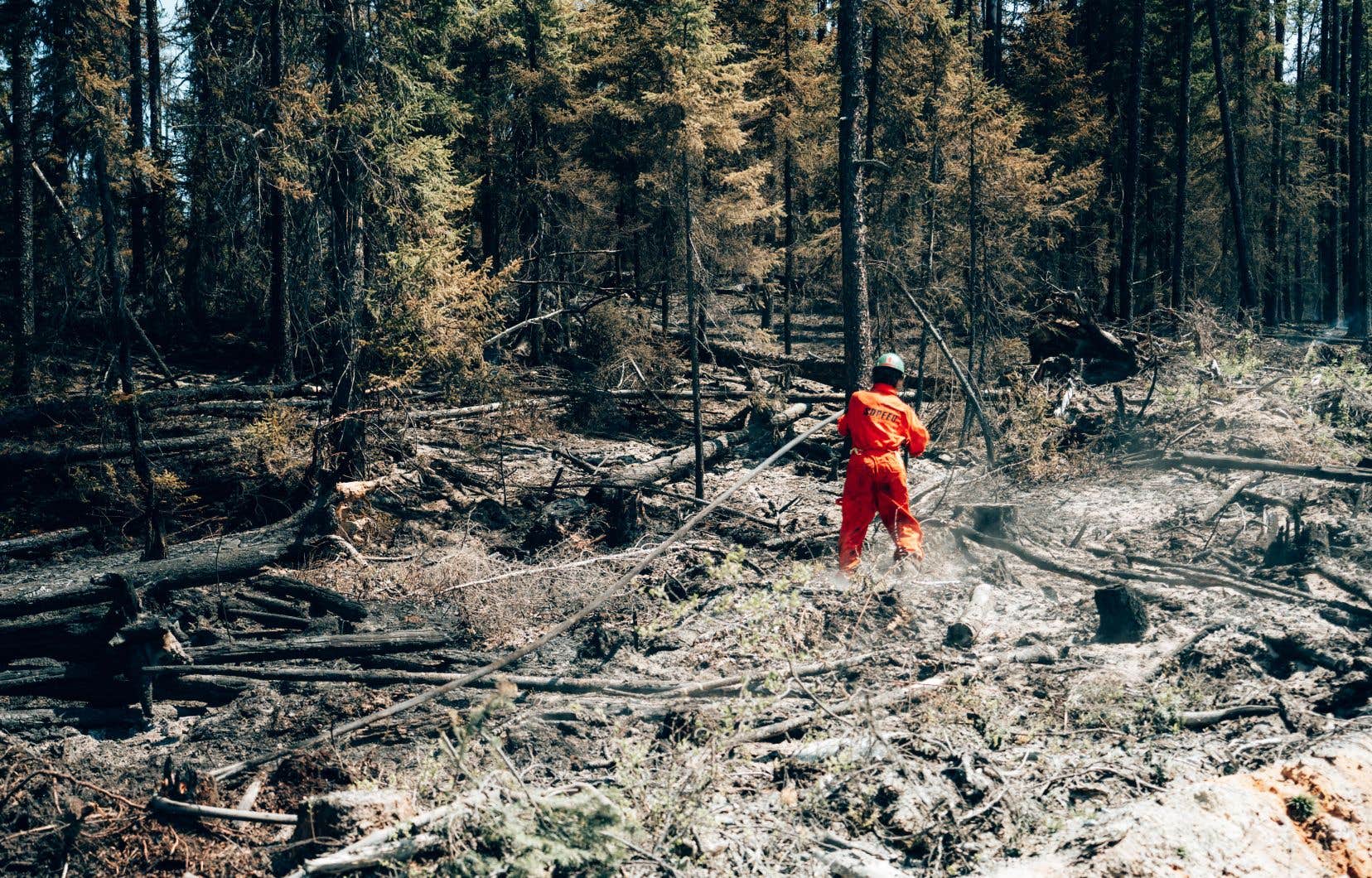The worsening climate crisis will have the effect of increasing the number and intensity of forest fires in Quebec over the next few years, note the experts in the matter. To try to limit the impacts of these fires, including an increase in greenhouse gas emissions, it is also urgent to review our forestry practices, they say.
On Monday, the Society for the Protection of Forests Against Fire (SOPFEU) reported more than 1,600 km2 of forests affected by the fires, nearly four times the area of the island of Montreal. The extent of the crisis is disproportionate to recent years, since the average over 10 years amounts to 2.5 km2 on the same date.
The season of forest fires, which has only just begun, is likely to continue with unprecedented intensity over the coming days and weeks, Prime Minister François Legault warned on Monday. The latter also sees in it the mark of global warming. The federal government is also anticipating a fire season, particularly in several regions of the country.
This situation, which is dramatic for many communities, comes as no surprise to Yan Boulanger, a forest ecology researcher at Natural Resources Canada. “The impact of climate change is already significant. The fire season is getting longer and longer, it starts earlier and earlier and the conditions conducive to fires are more and more severe,” he notes.
“The heat that we have seen this year is conducive to fires. There are also more and more dead trees in the forests, due to insect epidemics and droughts. And dead trees become fuel. So we see more and more of these positive feedback loops, with an increase in fires, their severity, and so on. explains Christian Messier, professor of forest ecology at UQAM and the University of Quebec in Outaouais.
However, the worst is yet to come in Canada, he warns. Several provinces are indeed at risk of suffering more and more of these fires, including Quebec. Even if the boreal forest is an ecosystem historically prone to fires, global warming is pushing us towards an exit from this “natural variability”. Results: the areas burned annually could be multiplied by two or even four over the next few decades, according to Mr. Boulanger.
A federal analysis indicates that this kind of scenario is likely to occur even in the event of a “rapid” reduction in global greenhouse gas emissions. Abitibi-Témiscamingue, Baie-James and northern Saguenay-Lac-Saint-Jean will be the most affected regions. But the North Shore, Mauritius, Gaspésie and even the Laurentians will not be spared.
Increase in GHGs
Not all years should resemble what is looming for 2023, but the blazes that force the evacuation of populations, affect infrastructure, isolate communities or outright destroy inhabited environments will increasingly be part of reality, underlines Yan Boulanger.
“Fires will start to occur in forests where there is no history of fires. Forests likely to burn will burn more and fires will return too quickly to allow forests to regenerate. We risk ending up with more ecosystem collapses and rising CO emissions.2 “, adds Christian Messier.
The increasing frequency of fires will indeed harm the growth of forest cover, essential for the protection of biodiversity and to meet the demands of the forest industry, estimates Pierre Drapeau, holder at UQAM of the UQAT Chair. -UQAM in sustainable forest management. “When the time interval between two fires on the same territory becomes shorter and shorter, the trees do not have time to reach maturity, and therefore to regenerate. So even though we have trees that are resilient to fires, the rubber band is too stretched. Regeneration accidents therefore occur. »
Ironically, the fires could increase Quebec’s greenhouse gas emissions in the coming decades, according to Mr. Messier. “Canada’s forests emit more CO2 that they capture, because of the forest fires. We can fear that even in Quebec, our forests will come to have a negative balance, thus releasing more CO2 that they capture, because of the mortality caused by insects, droughts, but also the increase in fires. »
In an attempt to limit the damage, it is urgent to review forest management, according to the experts consulted by The duty. Pierre Drapeau pleads for better protection of the last old forests, which are more resilient to fires.
Christian Messier, for his part, insists on the need for an adaptation “strategy” that would make it possible to better diversify forests during reforestation. This could mean, for example, planting species that are better adapted to fires, or even adding as many hardwoods as possible, which are less vulnerable to their spread.
“We have been talking about adaptation for ten years, but there is still no clear strategy from the government. This idea that we want to maintain the same composition of the forest regardless of what’s to come only increases vulnerability to droughts, epidemics and fires. The forests will therefore burn more intensively and it will be more difficult to control the fires. It’s a recipe for disaster. »
